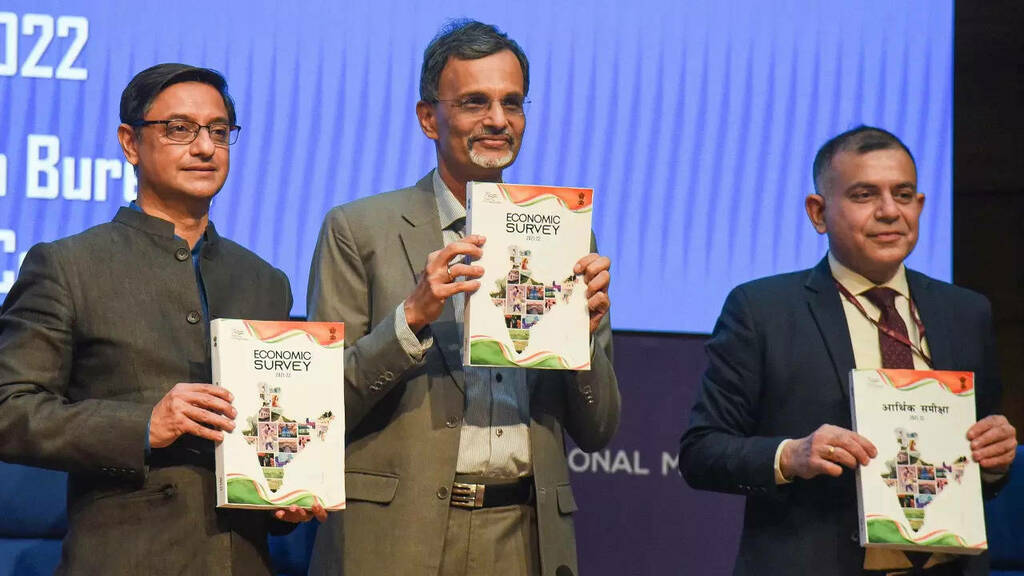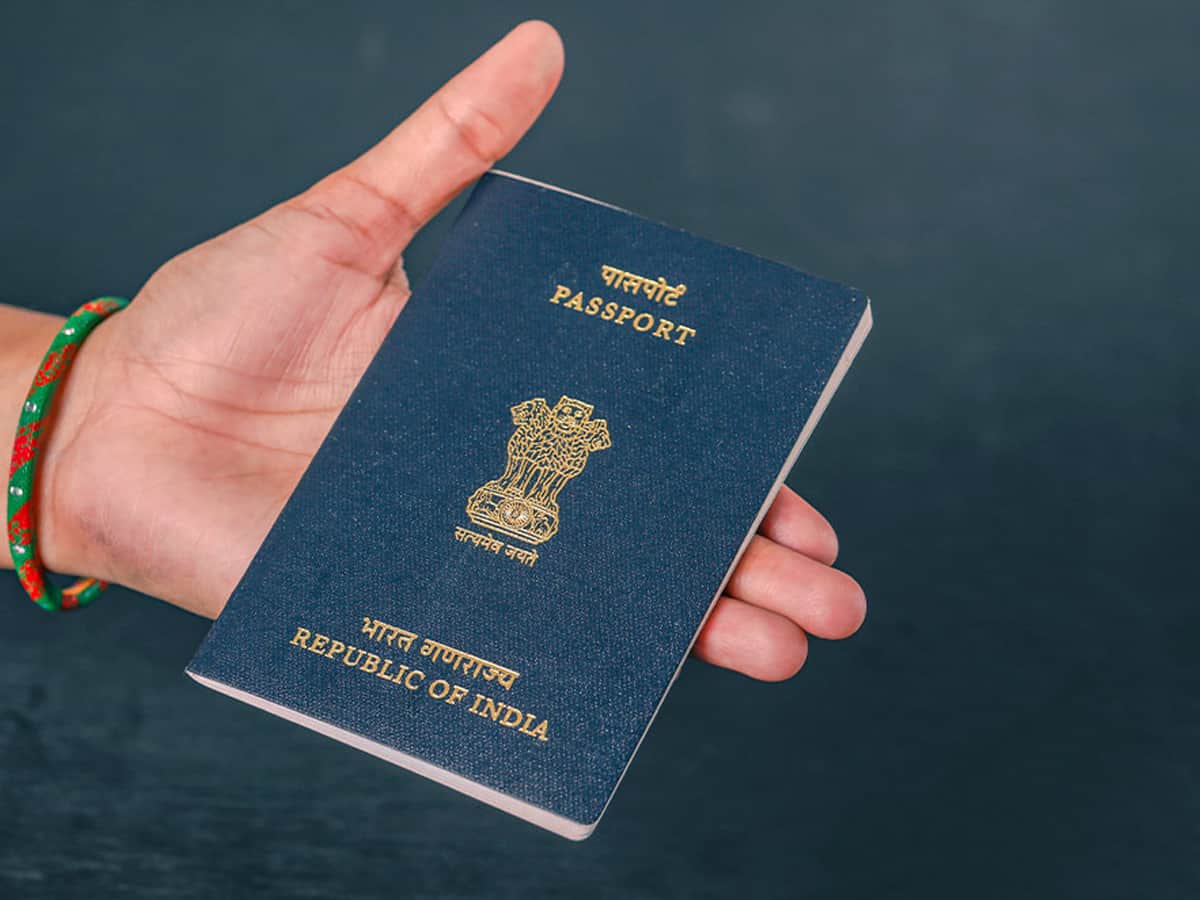Govt finances to witness consolidation in 2021-22, after uptick in deficit and debt indicators during pandemic year FY21, says Eco Survey
New Delhi, NFAPost: India’s economic growth is expected to remain in the range of 8 to 8.5% in 2022-23 as against a projected growth of 9.2% in the current financial year and a sharp contraction witnessed in 2020-21, according to the Economic Survey 2021-22 tabled in the parliament on Monday.
“With the vaccination programme having covered the bulk of the population, economic momentum building back and the likely long-term benefits of supply-side reforms in the pipeline, the Indian economy is in a good position to witness GDP growth of 8.0-8.5% in 2022-23,” said the annual survey report released ahead of the Union Budget.
However, the report presented in the parliament by Finance Minister Nirmala Sitharaman noted the challenges arising out of the new COVID-19 variants and uncertainties in the global economy.
“The projection is based on the assumption that there will be no further debilitating pandemic related economic disruption, monsoon will be normal, withdrawal of global liquidity by major central banks will be orderly,” according to the survey. It also depends on oil price being in the range of $70-$75 a barrel and global supply chain disruptions easing.
Liquidity withdrawal
“The global environment still remains uncertain. At the time of writing, a new wave in the form of the Omicron variant was sweeping across the world, inflation had jumped up in most countries, and the cycle of liquidity withdrawal was being initiated by major central banks. This is why it is especially important to look at India’s macroeconomic stability indicators and their ability to provide a buffer against the above stresses,” it said.
Overall, macro-economic stability indicators suggest that the Indian economy is well placed to take on the challenges of 2022-23, it said.
One of the reasons that the Indian economy is in a good position is its unique response strategy. Rather than pre-commit to a rigid response, the Government of India opted to use safety-nets for vulnerable sections on one hand while responding iteratively based on Bayesian-updating of information.
Pre-pandemic levels
This “barbell strategy” was discussed in last year’s Economic Survey. A key enabler of this flexible, iterative “Agile” approach is the use of eighty High Frequency Indicators (HFIs) in an environment of extreme uncertainty.
Referring to the Advance Estimates of National Income released by the National Statistical Office (NSO), the survey said India’s Gross Domestic Product (GDP) is expected to expand by 9.2% in the current financial year after contracting in 2020-21. This implies that overall economic activity has recovered past the pre-pandemic levels.
Almost all indicators show that the economic impact of the “second wave” in Q1 was much smaller than that experienced during the full lockdown phase in 2020-21 even though the health impact was more severe, it said.
Agriculture and allied sectors have been the least impacted by the pandemic and the sector is expected to grow by 3.9% in 2021-22 after growing 3.6% in the previous year.
Advance estimates suggest that the GVA of Industry (including mining and construction) will rise by 11.8% in 2021-22 after contracting by 7% in 2020- 21.
Government spending
The Services sector has been the hardest hit by the pandemic, especially segments that involve human contact. This sector is estimated to grow by 8.2% this financial year following last year’s 8.4% contraction.
Total consumption is estimated to have grown by 7% in 2021-22 with significant contributions from government spending. Similarly, Gross Fixed Capital Formation exceeded pre-pandemic levels on the back of ramped up public expenditure on infrastructure.
Exports of both goods and services have been exceptionally strong so far in 2021-22, but imports also recovered strongly with recovery in domestic demand as well as higher international commodity prices.
As per the survey, the government has the fiscal capacity to maintain the support, and ramp up capital expenditure when required.
The strong revival in revenues also provides government with fiscal space to provide additional support as well, if necessary, it added.
Also, the banking system is well capitalised and the overhang of Non Performing Assets (NPAs) seems to have structurally declined even allowing for some lagged impact of the pandemic.
Energy prices
Referring to the price situation in the country, the survey said “although the high WPI inflation is partly due to base effects that will even out, India does need to be wary of imported inflation, especially from elevated global energy prices”.
“Overall, macro-economic stability indicators suggest that the Indian economy is well placed to take on the challenges of 2022-23.”
The growth in 2022-23, it said will be supported by widespread vaccine coverage, gains from supply-side reforms and easing of regulations, robust export growth, and availability of fiscal space to ramp up capital spending.
The survey also said India’s external sector is resilient to face any unwinding of the global liquidity arising out of the likelihood of faster normalisation of monetary policy by systemically important central banks, including the Fed, in response to elevated inflationary pressures.
The latest survey has shifted from the two-volume format of recent years to a single volume plus a separate volume for statistical tables.
The Budget will likely prioritise growth over fiscal consolidation by boosting spending, according to economists Bloomberg surveyed. Finance Minister Nirmala Sitharaman will probably expand the budget by about 14% year-on-year to Rs 39.6 trillion ($527 billion) in the financial year beginning April, according to the median of estimates compiled by Bloomberg. She is expected to leave tax rates largely unchanged, and instead rely on income from asset sales and a near-record borrowing of about Rs 13 trillion to partly fund the plan.
Capital expenditure
Economists predict that Sitharaman would target a fiscal gap of 6.1% of GDP next year after ending the current year with a 6.8% shortfall, thanks to looser spending to see the economy through the pandemic.
The Budget comes days before the start of elections in five states, including the most populous one, Uttar Pradesh, which could spur Sitharaman to promise higher rural spending and subsidies on food and fertiliser.
The Budget is expected to push public capital expenditure (capex) and simultaneously create a conducive environment for private capex. This would mean raising allocation to sectors liek defence, railways and renewable energy transmission projects, perking up the domestic capital goods industry, brokerages told Business Standard last week.
Businessmen and economists worry about growing risks of inflationary pressure for the country, amid rising global crude oil prices and the next wave of Covid-19 infections that experts say may threaten over the next eight to 10 weeks.
The economy also faces the risk of a rise in interest rates, even before a pick-up in spending by consumers and companies, as the US central bank plans rate hikes.





